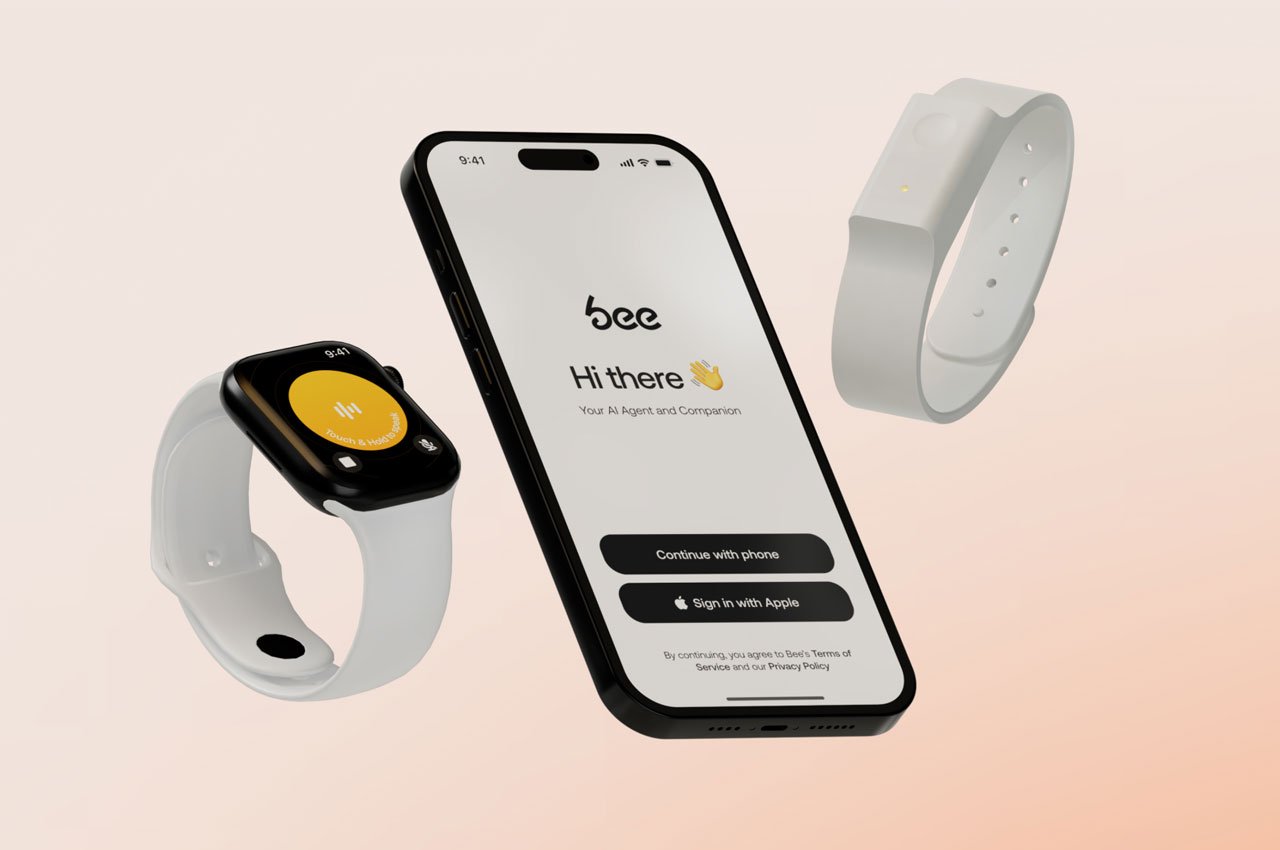Amazon is set to acquire Bee, a San Francisco–based startup that makes an AI-enabled bracelet capable of transcribing conversations and generating summaries, reminders, and to‑do lists from audio it records throughout the day. According to Tech Crunch, the transaction was confirmed by Amazon following a LinkedIn post by Bee’s CEO, Maria de Lourdes Zollo, though specific financial terms were not disclosed. The deal has not yet closed but signals Amazon’s renewed embrace of wearable AI devices following the discontinuation of its Halo health trackers in 2023.
Bee’s Core Technology and Pricing
Bee’s signature product is a Fitbit-like wristband priced at $49.99, with an associated $19-per-month subscription for the AI service. The device continuously listens to the surroundings—unless manually muted—and transcribes conversations in real time, creating a searchable personal log of daily interactions. Users receive AI-generated summaries and reminders, with the ability to link their emails, calendar, contacts, and location to enhance contextual awareness. In addition to the wristband, Bee also offers an Apple Watch app featuring similar functionalities.
The startup successfully raised $7 million in seed funding last year from investors including Greycroft and Exor, positioning itself as a pioneer in “ambient AI” that operates passively and seamlessly.
Amazon’s Strategy and Bee’s Future Role
With the acquisition, Bee is expected to become part of Amazon Devices, led by Panos Panay. Amazon plans to integrate Bee’s platform into its broader AI ecosystem, which includes devices like Echo and Alexa-enabled smart glasses. An Amazon spokesperson emphasised that user privacy remains a top priority and that Bee’s existing privacy features—such as not saving raw audio and allowing users to delete data—will be retained and expanded to give users more control over recordings and transcription.
The Privacy Debate Heats Up
AI wearables that record and process everything the user says raise serious privacy concerns. Bee has taken steps to address these challenges, promising not to store raw audio or use recordings for AI training. Users can also define specific contexts—such as their home or workplace—where recording is automatically disabled, and the device currently avoids capturing non-consenting voices. Bee aims to shift voice processing onto the device itself for added data security.
Despite these safeguards, questions loom over whether Amazon will maintain these standards after fully integrating the company. Amazon has faced criticism in the past—for example, for sharing Ring camera footage with law enforcement without warrants—raising questions about its broader data usage policies. The company has stated that it plans to provide users with even greater transparency and control post-integration.
Market Context and Strategic Timing
Amazon’s acquisition of Bee comes amid an escalating race among tech giants to firmly establish themselves in the wearable AI space. Companies like Meta, OpenAI, and Apple are all betting on personal AI hardware—ranging from smart glasses to body sensors—as the next frontier of computing.
Bee’s sub-$50 price tag distinguishes it from competitors like Humane AI’s Pin, priced at $499, and Meta’s Ray-Ban smart glasses. The affordable pricing of Bee’s wristband may make AI-enhanced wearables more accessible to everyday consumers.
Why This Acquisition Matters
For Amazon, this acquisition signals a pivot from fitness tracking to broader, context-aware AI services in wearable form. It complements its existing offerings, like Echo frames, and aligns with a more integrated vision of personal AI assistant technology.
For consumers, this could mean more seamless and hands-free interaction with AI in daily life—AI-generated summaries of meetings, automatic reminders, and intelligent context-aware triggers could enhance productivity and convenience. However, the value these features offer depends heavily on how Amazon manages user data and privacy controls.
What to Watch Next
With the integration not yet finalised, key areas to monitor include whether Bee’s current privacy-first model endures under Amazon’s broader data policies and how the wristband will interact with other Amazon AI services. Observers will also be watching whether Amazon expands Bee’s capabilities—such as offline AI processing—or introduces new features tied to Alexa or AWS.
Photo Credit: Tech Crunch
For more business stories click here
Follow us for latest updates:




